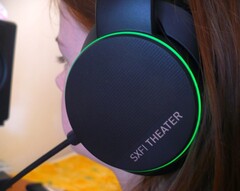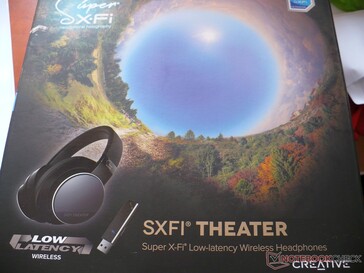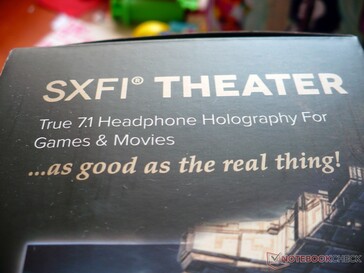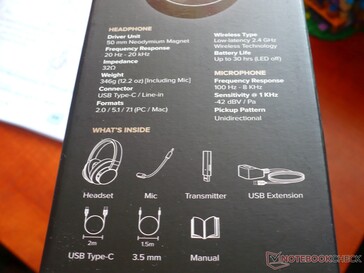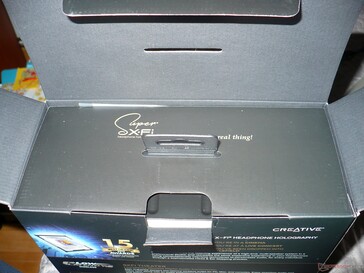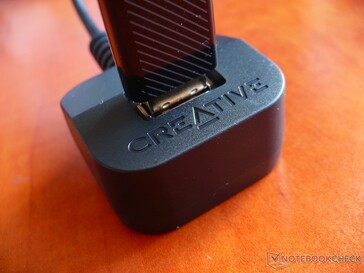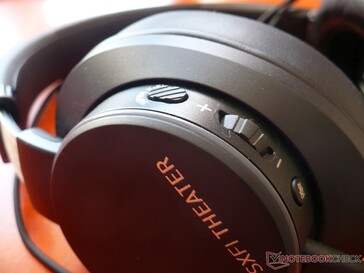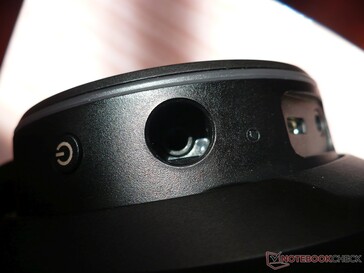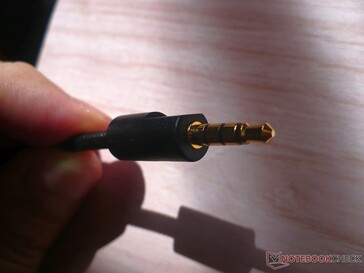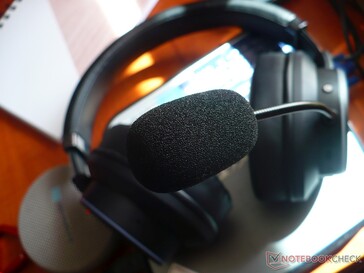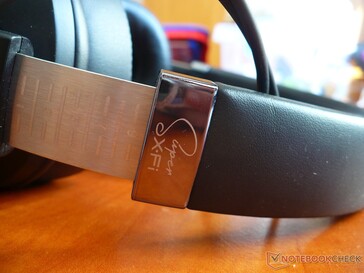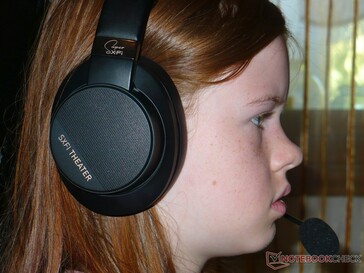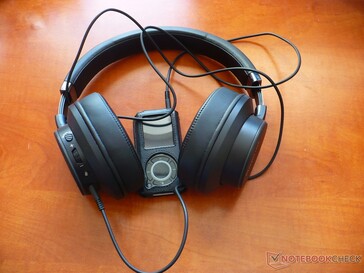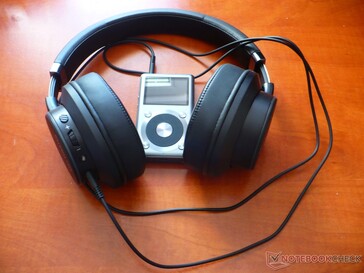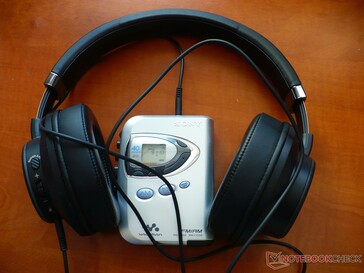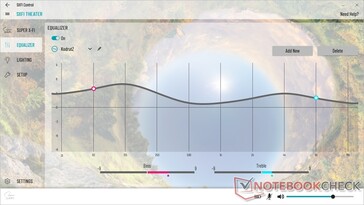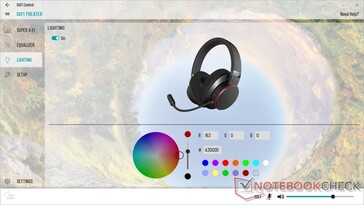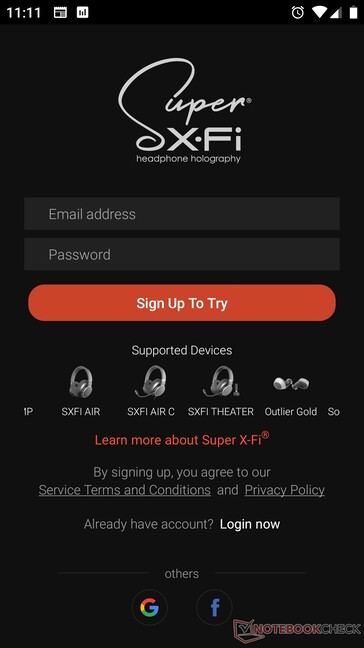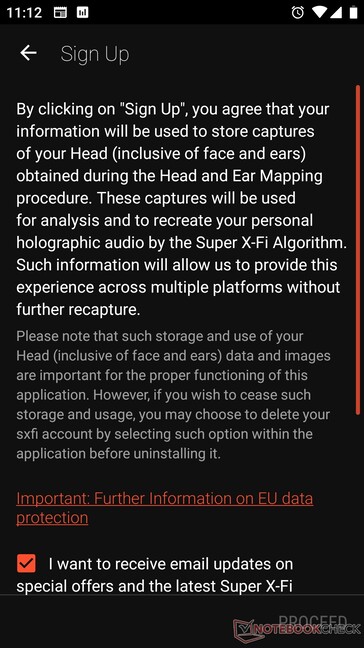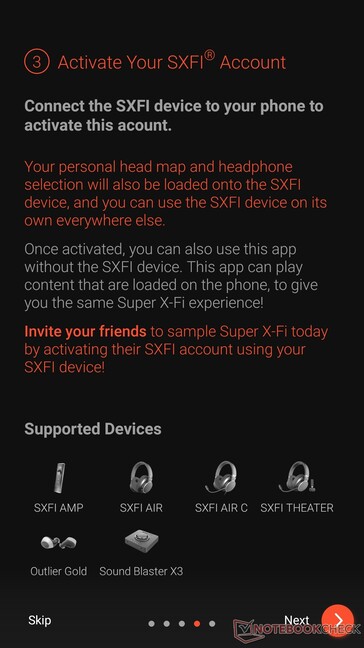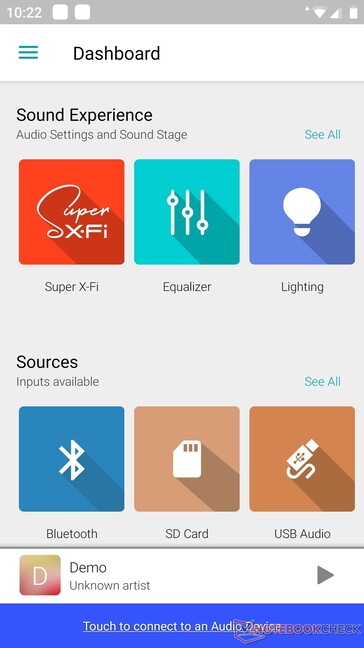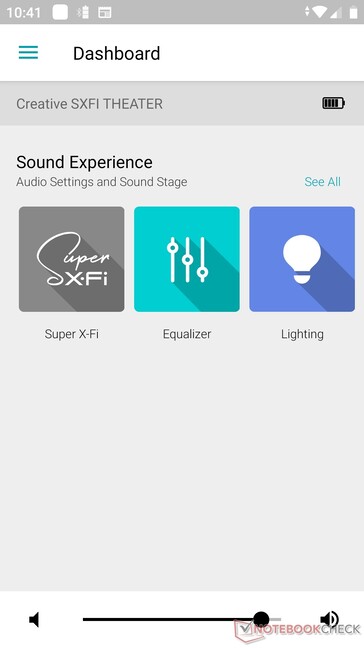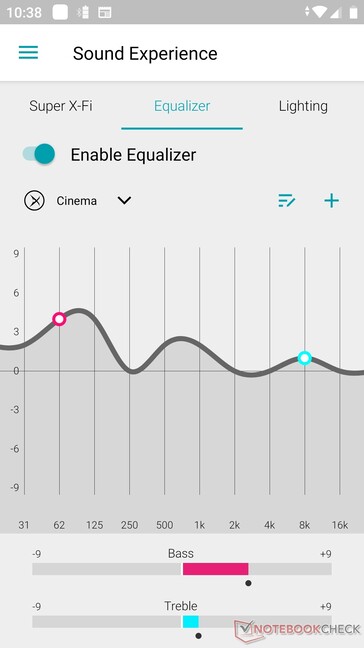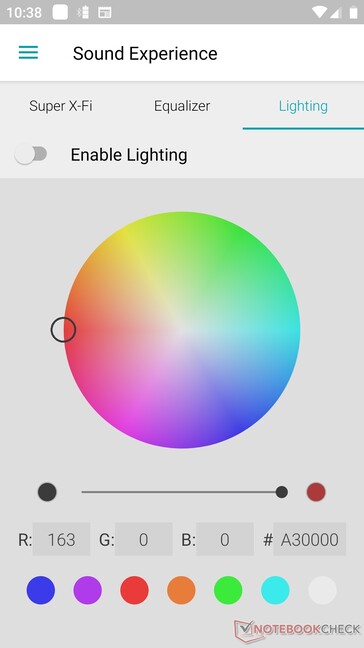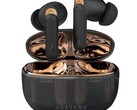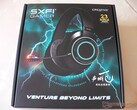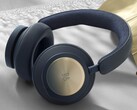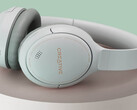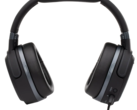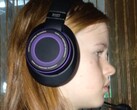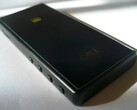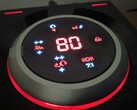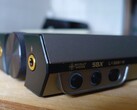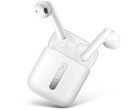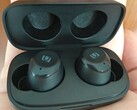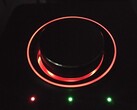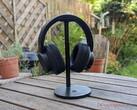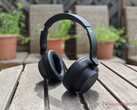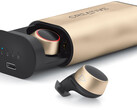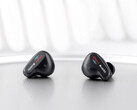When it comes to headphones that include Super X-Fi hardware processing, Creative has exactly five items available right now: SXFI AIR (already reviewed by Alex Alderson) and AIR C, the SXFI THEATER under my scope today, as well as the SXFI GAMER and SXFI TRIO that I will review in a few weeks. Before moving on, I must thank Creative's Edwin Ong for sending over the headset. As always, be sure that the opinions in this article are all mine and that I spent many hours using this product before deciding to say that something is great or not-so-great.
The official description goes like this: "2.4 GHz Low-latency Wireless USB Headphones with Super X-Fi Audio Holography for Movies" and I think that Creative should add "wired" to the mix as well because the SXFI THEATER managed to impress me when used as a wired headset connected to certain devices that I will mention later. Currently priced at US$199.99 (or a roughly equivalent amount, depending on the market), the Creative SXFI THEATER works with Windows PCs, Macs, PlayStation 4 and Nintendo Switch consoles, as well as virtually anything that has a 3.5 mm audio output jack.
Packaging and looks
Like all the other SXFI products currently on the market, the retail package of the SXFI THEATER looks great and delivers all the essential information the user needs to get started right away without having to check the documentation that comes inside the box.
The retail package is quite generous, although a set of replacement ear pads would be welcome. Some might say that a carrying case/pouch would also be nice to have, but I think this is not as important for large headsets as it is for in-ears. The box contains the headset itself alongside the USB dongle, a 3.5 mm line-in cable (could be very useful in a few years if the battery dies by then and replacement is not an option, but even now the cable allows the use on the go with media players or mobile phones with a 3.5 mm audio output), a detachable — and very flexible — gaming microphone, a USB-C cable for charging, as well as a separate USB extension dock that can be very useful no matter if you are going to use it to place the dongle on your desk — quite handy if you keep the computer on the floor — and improve its wireless coverage or just to have a USB port close to you.
The accessories mentioned above might be a bit tricky to spot at first sight, because they come inside a small white box that Creative placed on the back of the plastic mold that keeps the headphones in place so they don't rattle inside the retail box. When you take out the headset, the white box does not fall off because it is held in place by two plastic "ears" — this is not something about the headset itself after all but shows how much attention Creative has paid to the details.
When talking about the materials used and build quality, the SXFI THEATER is quite similar to the SXFI AIR. While there are no touch controls here, the "soft protein leather" earcups are just as good — they seem to be made to last for years. The left earcup has all the controls and ports — power button, microphone on/off button, 3.5 mm microphone jack, SXFI effect switch, USB-C port for charging, 3.5 mm line-in jack, as well as a volume knob.
At a weight of 339 grams (roughly 0.75 pounds), the Creative SXFI THEATER can be considered quite heavy by some users. To me, the headset's weight was never a problem. However, the shape of my head and ears sometimes turn a pleasant experience into a nightmare. When I use the Koss Porta Pro, I can sometimes keep going for hours without a problem, but if I get unlucky, my left ear lobe starts hurting after a few minutes. While I have no problems with my ears when wearing the SXFI THEATER, sometimes I feel pain in the area where the headband touches the top of my skull. In most cases, adjusting the position of the headset and the headband itself helps. If not, it simply might be the time for a break.
A minor design detail that I need to point out is the pattern on the side of the headphones — nothing special, just some stripes. However, Creative was careful enough to apply the same pattern on the USB dongle, which is a nice touch. There are also two RGB LED light rings that make the SXFI THEATER look better (and easier to find) in the dark — but they can also be useful to get quick feedback on the battery level or connectivity status without checking any app.
Before moving on, I should add that the removable microphone looks and feels great — the metallic cover allows it to be very flexible and also to remain firmly in position after being adjusted. At first glance, everything about the Creative SXFI THEATER looks and feels great, maybe slightly above what can be expected for the US$199.99 asking price.
Specs and features
Without further ado, here are the essential specs of the two key elements involved when talking about the Creative SXFI THEATER: the wireless transmitter and the headset itself — including the speakers and microphone details, of course.
• SXFI TX wireless transmitter highlights: up to 10 meters (33 feet) range in open space (a single concrete wall can easily cut this in half), proprietary low-latency 2.4 GHz wireless connection and Bluetooth Low Energy, 5 V and 0.5 A input, maximum RF output 2 dBm (typical) or 4 dBm (BLE).
• SXFI THEATER highlights: 3.7 V 1300 mAh battery with 3 hours charging time, up to 30 hours autonomy with LED off, 50 mm Neodymium drivers, 20 Hz - 20 kHz frequency response, 32 O impedance, 114 dB / mW @ 1 kHz sensitivity, unidirectional noise-reduction microphone with 100 Hz - 8 kHz frequency response, less than 2.2 kO impedance, and a sensitivity level of -42 dBV / Pa @ 94 dB SPL.
Although the Creative SXFI THEATER are marketed at film and gaming fans thanks to the low-latency wireless connection and holographic audio support, I also discovered that these over-ear headphones could be advertised as an excellent wired solution for enjoying music. However, the result depends a lot on a few variables, such as the audio source and the type of music, not to mention the type of audio signature that the listener enjoys most.
The RGB LED lights are in sync, so both sides always have the same color. Depending on the button pressed, various lighting patterns are set in motion. For example, pressing and holding the power button shortly displays the battery level — green or yellow when charged, two red flashes when the battery level is low. Voice messages are also used for low battery notifications and to let the user know when the microphone is switched on or off. The RGB LED lights also show the wireless pairing status.
Real-life usage: ergonomics, sound, battery life
This headset feels solid and sometimes I can use it for hours without feeling anything wrong, but to ensure that the headband adjustment mechanism does not fail in time you should always handle them with both hands. I know that some people simply use a hand to remove headphones and move them around and the Creative SXFI THEATER doesn't feel flimsy. However, I always use both hands when adjusting, removing, or putting on over-ear and on-ear headsets.
After a few months of use, the earpads still look (and feel) like brand-new and I don't think this is going to change anytime soon. I must also add that I used the headset with glasses on for most of the time, and the experience was incredibly comfortable. These earpads also provide a fair amount of acoustic isolation, although you will hear if someone's cursing you from a few feet away and you are listening to music at reasonable volume levels.
The earcups are not fixed in place, and their limited range of motion is just enough for my needs. After a long struggle, I concluded that the lack of more cushioning on the headband can simply be compensated for by carefully adjusting the earcups so that the headband makes contact with the top of your skull in a way that does not lead to increased pressure to that area. Obviously, you can also loosen up the headband — no matter how bad was the adjustment of the headband and the pain that I sometimes felt on the top of my head, my ear area always felt like heaven.
Moving on to the sound part, I will start by saying that the holographic sound technology simply known as SXFI involves a bit of trial and error for each user. Speaking for myself, I will only say that my initial head/ears scan (there is a mobile app for this purpose) delivered a sound- processing pattern that destroyed the mid-range of most songs. Anything involving distorted guitars? Impossible to listen! The solution? A new scan, and this time I used my wife's head/ears. The result is astonishing. As a benchmark I used this cover of Mötley Crüe's Kickstart My Heart directly off YouTube — as long as the guitars are not completely muddy and the voices are not pushed somewhere (way) in the back, you probably got your scan right. While the 50 mm Neodymium drivers feel like smaller ones in non-SXFI use scenarios, Creative's holographic sound can make them shine and everything can feel completely different. Before moving on, here's one more tip: Before scanning your head and ears for a new profile, be sure to set a flat EQ or adjust it as you see fit because the SXFI effect is applied over the equalized audio, not over the raw audio source.
When used as a wireless headset, the sound delivered by the Creative SXFI THEATER is spot-on, quite powerful, lag-free, but also rather cold. As I already said, I think that the result depends a lot on the source. There is not much customization to be done in the Windows app (we will talk more about it a bit later), so the user must rely on the SXFI technology or the EQ/pre-amp settings of the software used to deliver the sound to the headset. The wireless range is in line with other pure Bluetooth solutions or custom ones — 15 feet away and a concrete wall between the dongle and the user is all right, but if we add 10 feet more and another wall, the connection dies. In a large room without walls, the wireless range of this headset should exceed 30 feet.
The microphone works as intended and is very easy to insert into position and adjust as needed. I am not a singer, so the microphone tests that I usually perform involve online communication and speaking recognition, nothing more. Sadly, there are no settings for it in the SXFI Control app and all software adjustments have to be made in the corresponding area of your operating system.
The major advantage of wireless headsets that connect to various devices via a USB dongle is that the sound quality and signature delivered is about the same every time. After all, the processing is done by the hardware in the dongle and the impact of the software companion is quite limited in most cases. The SXFI TX dongle and SXFI THEATER headset work well together, but — I will say it again, it depends A LOT on the source — when I used the headphones connected to a 3.5 mm audio output of a few of my audio devices I was simply blown away.
I will not insist on the acoustics of each experience, but I will mention that I went through a wide range of music genres (both lossless and lossy encodings, including online radio), games, movies, and even FM radio and an old-school audio tape (Covenant's “Nexus Polaris”) on my Sony WM-FX290 walkman (with MEGA BASS both on and off, an amazing audio treat to enjoy in 2020). I can't say that this headset is better for a certain genre, although those looking for extreme bass experiences might feel the urge to look for something closer to 5 Hz...
A big surprise came when I paired the SXFI THEATER with the EPOS | Sennheiser GSX 1200 PRO USB DAC (its review should go live later this month), which is supposedly conceived for gamers. In this scenario, I bumped into an incredible 7.1 virtual experience that made YouTube lossy music and even 128k online radio feel like something completely new. The best part of this hardware combo is that Sennheiser's virtualization sounds completely different than Creative's SXFI and made me realize once again that the headset might seem to deliver a flat sound but the truth is different — it just needs a good source or a bit of tweaking (Windows users should read that as "scan your head and ears until you get things right").
In addition to the above, I also used the wired SXFI THEATER headset with my SanDisk Sansa e250 (loaded with Rockbox, of course) and Fiio X3 II portable media players. In both cases, the results were very good. In case you were wondering, I would gladly take this headset with me on the road, as long as I have one of these two players to go with it — or the Fiio M3 Pro that has just arrived and should get its review later this month as well. We will talk about the sound it delivers to the wired SXFI THEATER in that hands-on, so stay tuned.
Before moving on to the software component, I have to say a few words about the battery life of this headset. As expected, the advertised autonomy of 30 hours decreases depending on the volume level and the status of the RGB LED lights. For the average user that will put the SXFI THEATER on for a movie and a few quick games each evening, a weekly charge should be enough. Pumping up the volume and keeping the RGB LED lights on should still give around 20 hours of battery life. This is not that bad, but when the competition delivers more than three times as much, it might become a problem.
Achilles' heel: The software
Creative's software environment is quite confusing because there are a bunch of apps, each with support for a limited range of hardware devices. In SXFI THEATER's case, we are talking about three pieces of code: the SXFI Control app, available for Windows and macOS, as well as the SXFI AIR Control and SXFI App, which can be installed on Android and iOS handsets.
The first app mentioned above is quite straightforward and allows its users to load and select a certain SXFI profile to load on the headset, adjust the EQ settings, turn RGB LED lighting on/off and customize the color, switch between stereo/5.1/7.1 audio and adjust the headset and microphone volume (nothing new compared to the standard settings available in Windows), and update the firmware of the device. The option to reset to factory defaults is also present and sometimes it can be a real life-saver (enough to say that all buttons — except the power switch — stopped working and a factory reset promptly solved my problem).
The mobile apps, on the other hand, should be combined into a single one because they are quite confusing right now. For example, both feature EQ settings, but only the SXFI App can connect to the Sound Blaster X3. On the other hand, the RGB LED lighting of the SXFI THEATER can only be adjusted using the SXFI AIR Control app. There is no rocket science involved here, but the average audio novice might find the whole mobile experience to be rather difficult.
The good, the bad, and the truth
Creative SXFI THEATER targets gamers and movie aficionados but manages to grab the attention of music lovers as well. Overall, this headset sports a premium design, a solid build with durable materials, as well as a pleasant out-of-the-box audio experience that can turn into pure gold with a bit of patience (and more than just a few head scans and adjustments). Despite its weight, this headset is very easy on the wearer's ears and can be used for long gaming sessions or to watch all of The Lord of The Rings movies in a single seating — as long as the initial headband adjustment is right (and a bit lucky, I must add). The wired audio experience — although thrown in as a "might be useful" feature — is definitely a strong feature that should be taken into account when judging these headphones.
The bad part that can be solved without any hardware changes is, obviously, the software environment. Adding some voice-processing settings (maybe real-time effects as well) for the Windows/macOS app and a unified mobile app would be great. Hardware-wise, a slightly different headband with more memory foam to better protect the top of the head would be nice. One set of replacement earcups? Nothing but pure gold. The speakers might need some adjustments to offer a warmer sound out of the box and better low-end response without SXFI processing. Last — but not least — increasing the battery life to at least 50 hours would surely improve the value of the whole package.
Those looking for an impressive wireless audio experience must take the SXFI THEATER for a spin and allow for more than just a few minutes to really "get it", because the first impression might be deceiving. In the end, the truth is that you get more value than what you pay for, and this is what really matters.
Source(s)
Creative Labs (United States) (official product page)




